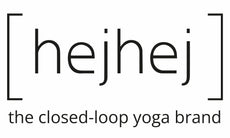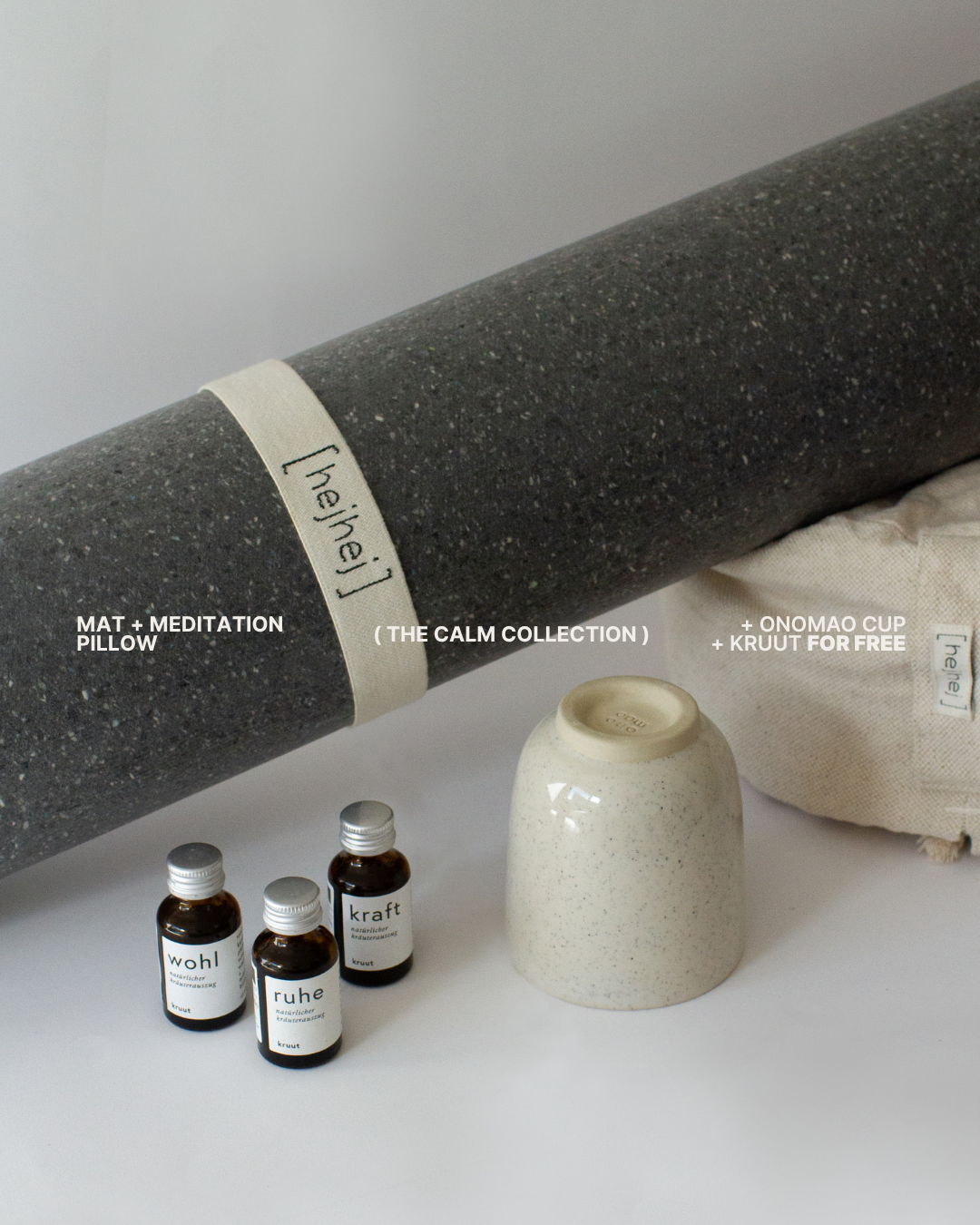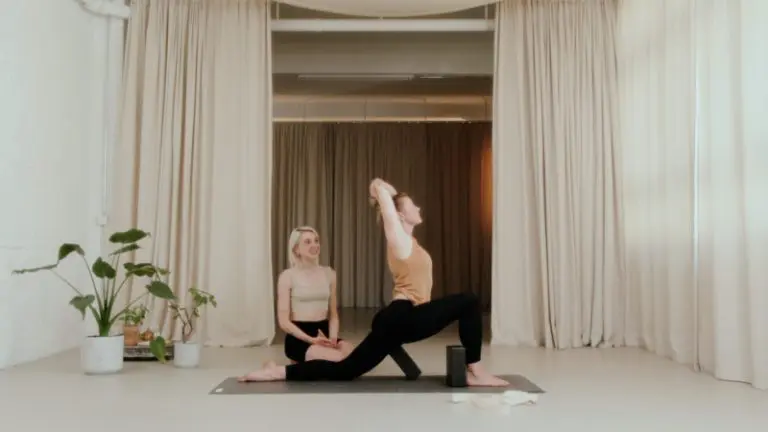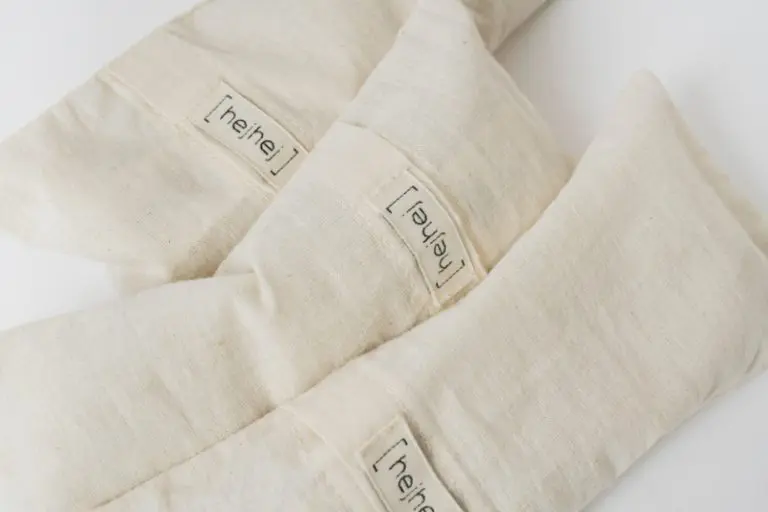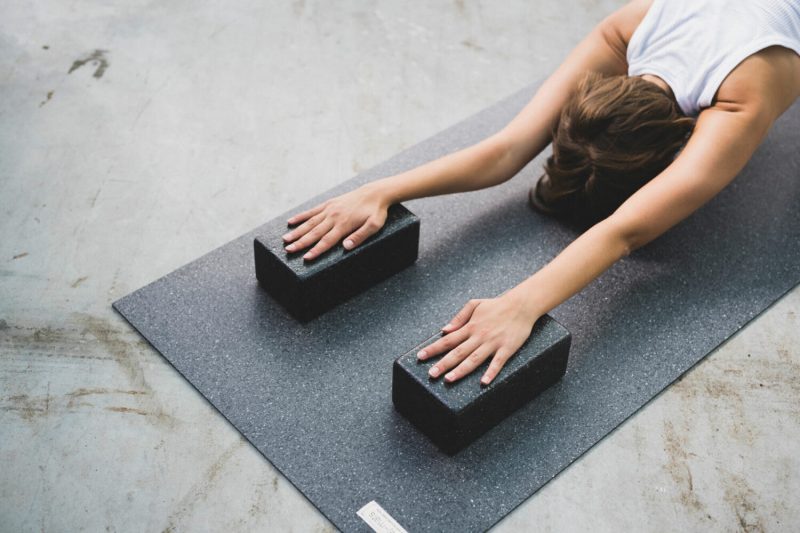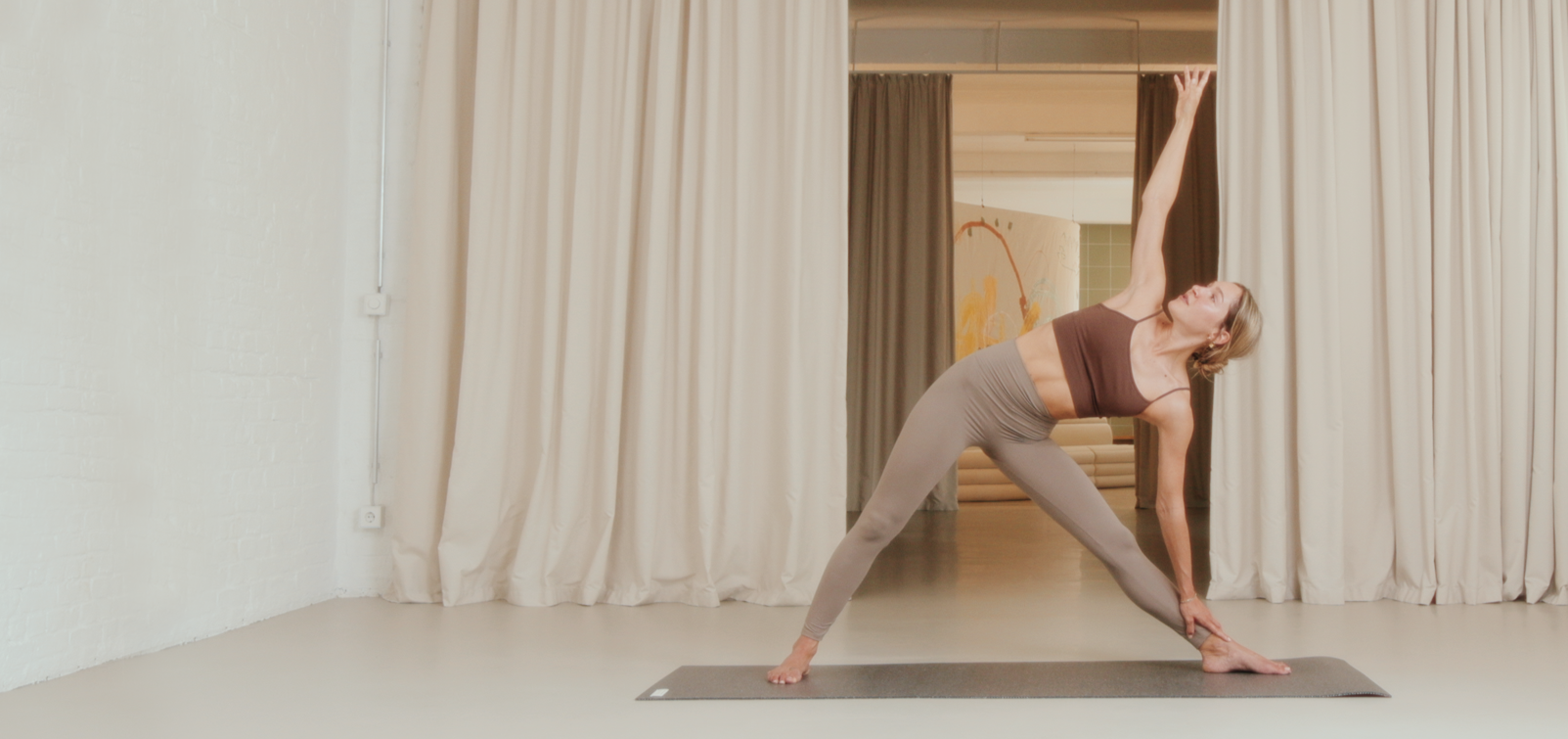The first time we became aware of Katonah Yoga was through our hejhej partner studio Original Feelings in Berlin. We all found the practice very special because it is clearly different from other styles like Vinyasa, Hatha, and Ashtanga. So we are very happy that we were able to shoot videos with Toni in Berlin for our hejhej Youtube channel. What is Katonah Yoga, what makes it so special, what role do right angles play, and what does the practice look like? We have tried to answer all these questions in this journal article and to summarize the most necessary things.
Where does Katonah Yoga come from?
Katonah Yoga was founded and developed by Nevine Michaan in the 1980s. In her twenties, she discovered the art of meditation for herself and began practicing with Allan Bateman, a yoga teacher and body therapist who is inspired by the teachings of the eastern world views. She opened her first studio in New York in the Katonah district, hence the name. Nevine’s metaphors and philosophy come from seeing the body as a house, an instrument, and thinking of yoga as the music we create. She says:
“I like to play with the idea that yoga is music, and there are lots of different types of music – but all music is playing with the same notes, the same chords; so how are you going to time it, how are you going to put it all together.”
Nevine Michaan
What does Katonah Yoga mean?
Katonah Yoga combines classical Hatha Yoga with Chinese Tao theory, geometry, and metaphors, everything goes hand in hand and is embedded in the teachings and practice. While most yoga styles refer to the philosophical teachings of Hinduism and Buddhism, the practice here is based on the Taoist philosophy. This may sound very abstract at first, but let’s explore it more deeply together.
The connection to Taoism
Taoism or Daoism is a Chinese philosophy. A worldview that is seen as a religion of its own in China. “Dao” translated means “way”, it is the way of accepting life in harmony with the natural rhythms of the universe. This means living in harmony with the natural cycles so that everything can flow freely. In this way, a spontaneous and selfless being emerges mindfully and with unintentional ease.
Perhaps you have heard of traditional Chinese medicine and the principle of Yin and Yang, or the practice of Qigong rings a bell. It all has its roots in Daoism and is woven into the Katonah philosophy. Chinese medicine takes a holistic view of the human being and his body and gives us insight into the teaching of the energy pathways and the function of our organs. The view of Yin and Yang is the first of three main principles in Daoism. It shows that everything in the universe is connected and nothing can exist and function alone. The second is that nature reveals its intelligence through patterns and forms. The third principle is that these patterns repeat themselves.
The Katonah Yoga Practice
Repetition holds the potential for new insights. Through repetition we can uncover our inherent patterns, rework them and allow new ones to emerge. Like water flowing over the same stone, again and again, the shape of the stone changes over time. Therefore, in the Katonah practice itself, asanas and exercises are repeated, creating the necessary water to re-cultivate our patterns.
Try Katonah Yoga directly online
As mentioned above, geometric shapes are also an important part of every Katonah Yoga class. In every class you will hear several times the request to measure yourself, to bring your body to a right angle. Every body is different, so each person has a personal measurement. But instead of aligning yourself according to how you feel in an asana, you bring your body into a universal shape. For example, you always use a hejhej-lock to help you align your form at a right angle. How to measure yourself is also explained in our Katonah Basic video.
When your body is aligned in a pose, and the geometry is correct, the body is supported by its own structure, and not by muscular strength, because true strength is not muscular strength, it is mind-based. What this means for your practice is that through proper alignment, muscular effort disappears and instead you move more out of your joints.
Origami folding
Another technique used is the folding of origami. Imagine a sheet of paper and Tadasana, when you fold the paper once in the middle you create a forward bend. The same thing happens when you flow out of your downward-facing, into your upward-facing dog. This way the practice becomes a constant folding and unfolding of the body.

One of the most important metaphors is to see the body as a house and as an instrument. The body is divided into different rooms, each room representing something different. If your foundation is stable, you feel grounded and secure in yourself, you can face challenges more easily. If there is a lot of chaos in your attic, in your head, you may feel burdened or restless. Our body is an instrument that we have to take care of, one that should be tuned again and again.
All of this forms a map for the body to guide you, without relying on your emotions and feelings.
That was a tiny glimpse into the theory and practice. To better understand Katonah Yoga and everything behind it, you simply have to experience it yourself on your own body. A Katonah class feels like a deep cleaning of your house, putting the furniture in its place, and letting a breath of fresh air through the windows.
On our hejhej Youtube channel, you will find a new video with great teachers every second week, feel free to check it out. Here you will find a playlist with all Katonah videos: Katonah Yoga Classes. Including a Katonah-inspired 30-minute sequence with Gina.
Want to practice at the studio? We have great partner studios that offer Katonah Yoga.
